| President | Year | Picture | Awardee | Province | Category | Notes |
|---|
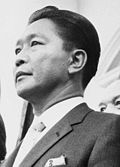
Ferdinand Marcos | 1972 |  | Fernando Cueto Amorsolo
(1892–1972) | Manila | Visual Arts – Painting | posthumous conferment |
|---|
| 1973 |  | Francisca Santos Reyes-Aquino
(1899–1983) | Bulacan | Dance | |
|---|
 | Carlos Modesto "Botong" Villaluz Francisco
(1912–1969) | Rizal | Visual Arts – Painting | posthumous conferment |
 | Amado Vera Hernández
(1903–1970) | Manila | Literature |
 | Antonio Jesus Naguiat Molina
(1894–1980) | Manila | Music | |
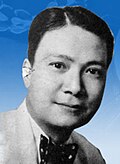 | Juan Felipe de Jesus Nakpil
(1899–1986) | Manila | Architecture | |
 | Guillermo Estrella Tolentino
(1890–1976) | Bulacan | Visual Arts – Sculpture | |
 | José García Villa
(1908–1997) | Manila | Literature | |
| 1976 | 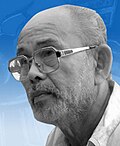 | Napoleón "Billy" Veloso Abueva
(1930–2018) | Bohol | Visual Arts – Sculpture | |
|---|
 | Leonor Luna Orosa-Goquingco
(1917–2005) | Batangas | Dance | |
 | Lamberto Vera Avellana
(1915–1991) | Mountain Province | Film and Theater | |
 | Nicomedes "Nick" Márquez Joaquín
(1917–2004) | Manila | Literature | |
 | Jovita Flores Fuentes
(1895–1978) | Capiz | Music | |
 | Victorio Cándido Edades
(1895–1985) | Pangasinan | Visual Arts – Painting | |
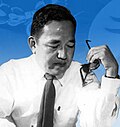 | Pablo Sebero Antonio Sr.
(1901–1975) | Manila | Architecture | posthumous conferment |
| 1981 |  | Vicente Silva Manansala
(1910–1981) | Pampanga | Visual Arts – Painting |
|---|
| 1982 |  | Gerardo "Gerry" Ilagan de Leon
(1913–1981) | Manila | Film |
|---|
 | Carlos Peña Rómulo
(1898–1985) | Tarlac | Literature | |

Corazon Aquino | 1987 | 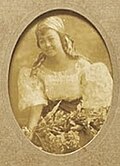 | Honorata "Atang" Márquez de la Rama-Hernández
(1902–1991) | Manila | Theater and Music | |
|---|
| 1988 | | Antonino Ramírez Buenaventura
(1904–1996) | Bulacan | Music | |
|---|
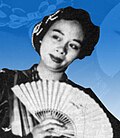 | Lucrecia Faustino Reyes-Urtula
(1929–1999) | Iloilo | Dance | |
| 1989 |  | Lucrecia Roces Kasilag
(1918–2008) | La Union | Music | |
|---|
| 1990 | | Zacarias Francisco "Franz" Quino Arcellana
(1916–2002) | Manila | Literature | |
|---|
 | Cesar Torrente Legaspi
(1917–1994) | Manila | Visual Arts – Painting | |
| Leandro Valencia Locsín
(1928–1994) | Negros Occidental | Architecture | |
| 1991 | | Hernando Ruiz Ocampo
(1911–1978) | Manila | Visual Arts – Painting | posthumous conferment |
|---|
 | Lucio Diestro San Pedro Sr.
(1913–2002) | Rizal | Music | |

Fidel V. Ramos | 1997 | 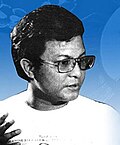 | Catalino "Lino" Ortiz Brocka
(1939–1991) | Sorsogon | Film | posthumous conferment |
|---|
 | Felipe Padilla de León
(1912–1992) | Nueva Ecija | Music |
 | Wilfrido María Barredo Guerrero
(1911–1995) | Manila | Theater |
| Rolando Santos Tinio
(1937–1997) | Manila | Theater and Literature |
 | Néstor Vicente Madali González
(1915–1999) | Romblon | Literature | |
 | Levi Celerio Cruz
(1910–2002) | Manila | Music & Literature | |
 | Arturo Rogerio Luz
(1926–2021) | Manila | Visual Arts – Painting | |
 | José Montserrat Maceda
(1917–2004) | Manila and Laguna | Music | |
 | Carlos Lozada Quirino
(1910–1999) | Manila | Historical Literature | |

Joseph Estrada | 1999 | | Jerry Navarro Elizalde
(1924–1999) | Antique | Visual Arts – Painting | posthumous conferment |
|---|
| Ernani Joson Cuenco
(1936–1988) | Bulacan | Music |
| Andrea Carriaga Ofilada-Veneracion
(1928–2013) | Manila | |
 | Edith Cutaran López-Tiempo
(1919–2011) | Nueva Vizcaya and Negros Oriental | Literature | |
 | Daisy Pardo Hontiveros-Avellana
(1917–2013) | Capiz | Theater | |
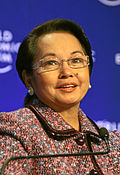
Gloria Macapagal Arroyo | 2001 | 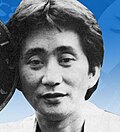 | Ishmael Bernal
(1938–1996) | Manila | Film | posthumous conferment |
|---|
 | Severino Tabat Montano
(1915–1980) | Ilocos Norte | Theater |
 | Francisco Sionil José
(1924–2022) | Pangasinan | Literature | |
| Ang Kiukok
(1931–2005) | Davao del Sur | Visual Arts – Painting | |
| 2003 | | Jose T. Joya
(1931–1995) | Manila | posthumous conferment |
|---|
 | Virgilio Senadrin Almario
(b. 1944) | Bulacan | Literature | |
 | Alejandro Reyes Roces
(1924–2011) | Manila | |
 | Edgar Sinco Romero
(1924–2013) | Negros Oriental | Film and Broadcast Arts | |
 | Salvador Floro Bernal
(1945–2011) | Pangasinan | Theater and Design | |
| 2006 |  | Benedicto Reyes Cabrera
(b. 1942) | Manila | Visual Arts – Painting | |
|---|
 | Abdulmari Asia Imao
(1936–2014) | Sulu | Visual Arts – Sculpture | |
 | Bienvenido Lumbera
(1932–2021) | Batangas | Literature | |
| Ramon Arevalo Obusan
(1938–2006) | Albay | Dance | |
 | Ildefonso Paez Santos Jr.
(1929–2014) | Manila | Architecture – Landscape | |
 | Ronald Allan "Fernando" Kelley Poe Jr. 1
(1939–2004) | Manila | Film | posthumous conferment |
 | Ramón Oswald Valera
(1912–1972) | Abra | Fashion Design |
| 2009 2 [5] |  | Manuel Pabustan Urbano (Manuel Conde)
(1915–1985) | Camarines Norte | Film and Broadcast Arts |
|---|
| Lázaro Ángeles Francisco
(1898–1980) | Bataan | Literature |
| Federico Aguilar Alcuaz
(1932–2011) | Manila | Visual Arts – Painting, Sculpture and Mixed Media |

Benigno Aquino III | 2014 [6] |  | Alice García Reyes van Doorn
(b. 1942) | Manila | Dance | |
|---|
 | Francisco Vicente Coching
(1919–1998) | Manila | Visual Arts | posthumous conferment |
 | Cirilo Francisco Bautista
(1941–2018) | Manila | Literature | |
| Francisco Espíritu Feliciano
(1941–2014) | Rizal | Music | posthumous conferment |
 | Ramón Pagayon Santos
(b. 1941) | Manila | Music | |
| José María Vélez Zaragoza
(1912–1994) | Manila | Architecture | posthumous conferment |

Rodrigo Duterte | 2018 |  | Raymundo Cipriano "Ryan" Pujante Cayabyab
(b. 1954) | Manila | Music | |
|---|
 | Francisco "Bobby" Tronqued Mañosa
(1931–2019) | Manila | Architecture and Allied Arts | |
| Ramón Larupay Muzones
(1913–1992) | Iloilo | Literature | posthumous conferment |
 | Resil Buagas Mojares
(b. 1943) | Zamboanga del Norte/Cebu | Literature | |
| Lauro "Larry" Zarate Alcala
(1926–2002) | Albay | Visual Arts | posthumous conferment |
 | Amelia Ramolete Lapeña-Bonifacio
(1930–2020) | Manila | Theater | |
 | Eric Oteyza de Guia (Kidlat Tahimik)
(b. 1942) | Benguet | Film and Broadcast Arts | |
| 2022 | 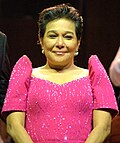 | Nora Cabaltera Villamayor "Aunor"
(1953–2025) | Camarines Sur | Film and Broadcast Arts | |
|---|
 | Agnes Dakudao Locsin
(b. 1957) | Davao | Dance | |
 | Fides Belza Cuyugan-Asensio
(b. 1931) | Quezon | Music | |
 | Ricardo "Ricky" Arreola Lee
(b. 1948) | Camarines Norte | Film and Broadcast Arts | |
 | Gémino Henson Abad
(b. 1939) | Manila | Literature | |
| Antonio "Tony" Ocampo Mabesa
(1935–2019) | Laguna | Theater | posthumous conferment |
| Marilou Correa Diaz-Abaya
(1955–2012) | Manila | Film and Broadcast Arts |
 | Salvacion Navera Lim-Higgins
(1920–1990) | Albay | Fashion Design |








































































